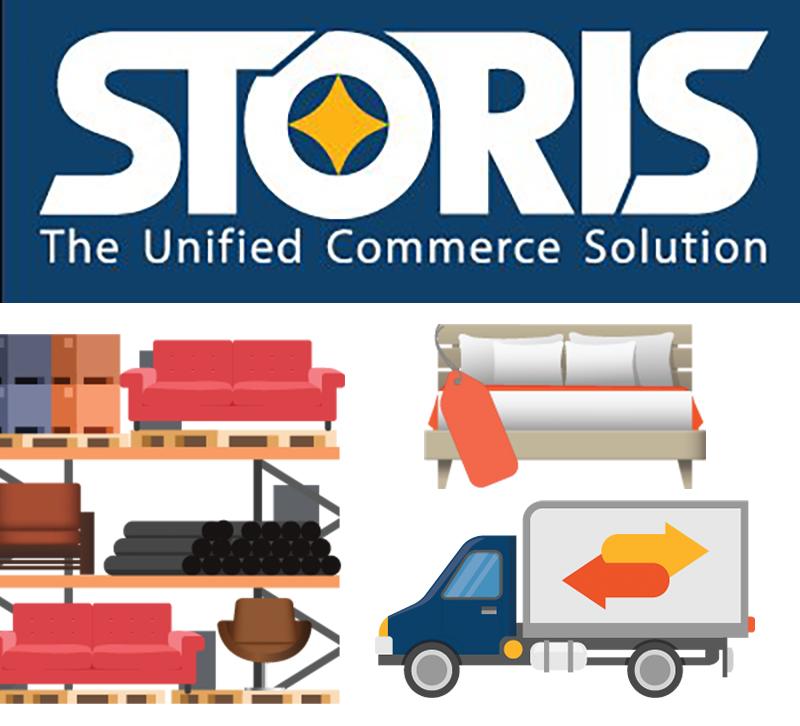STORIS has announced Release 10.4 of its logistical software, touting significant enhancements across a spectrum of functional areas. A common thread of the new features is resource efficiency, from warehouse operations to inventory allocation and margin control. The new features provide multiple ways to gain added value from STORIS, the company says.
The ability to streamline logistical processes is a competitive advantage as supply chains remain strained due to the Pandemic. Version 10.4 offers a plethora of logistical enhancements focused on creating efficiencies.
Logistical Enhancements
First, Alternate Stock Locations enables both store and warehouse locations to be set as secondary fulfillment options if a primary fulfillment location does not have inventory available.With this new functionality, retailers can use a sequenced chain of fulfillment locations therefore exhausting their in-house resources to adequately meet customer demand.
Next, through Pickup and Return Location Lists, retailers can restrict their location list by fulfillment type for each employee. This allows sales associates to have access to different locations for various activities. As a use case, customers can pick-up or return products to a location that sales associates may not typically sell out of, again utilizing more resources within a retailer’s operations. For greater efficiency, a related enhancement will automatically adjust the stocking location of a product after the fulfillment location changes to reduce the amount of transfers. Finally, in this category is the new Direct Ship Service Purchase Orders capability to easily drop-ship parts needed for customer service and repairs.
For retailers that use EDI to communicate with Third Party Logistics companies, manifests can now be sent via EDI and trigger the automatic creation of barcode labels. Additionally, handling methods for each product on the manifest will be included so the third-party logistics company will know how to deliver the product. These new methods of inter-warehouse communications greatly reduce steps along the supply chain.
The final new feature in the logistics category, Dock Scheduling, provides a confirmed date from the shipping company via the Acknowledge a Purchase Order process. A dock scheduled date means the shipping company has confirmed the schedule with the warehouse. This provides the retailer with a precise date vs. an estimated date to accurately schedule customer deliveries and meet expectations.
Margin Preservation
Next, several new features are aimed at margin preservation. This begins with Restrictions on the Time Frame for Return of Products. Retailers can now define control settings for the number of days in which an item is eligible for a return or exchange without management approval. Further, the addition of a Group Level setting enables more granular control as compared to an over-arching company return policy. Within this enhancement, User Groups can be defined to permit specific employees to grant overrides. Additionally, retailers can now control Reason Codes that can be used for returns at the
Group Level. Control over available reason codes by Product Group results in better reason codes being used by personnel entering the return/exchange.
Another new feature is Restrict Promotional Pricing on Orders which allows promotions to be controlled at the line item level. For example, a customer may have an Open Sales Order that includes a product that was eligible for a promotion based on the date that line item was added. With this new margin control, when a salesperson adds subsequent items to that same Open Sales Order, it restricts the ability to use expired promotions on the newly added items based on the date each individual line is added.
The last enhancement related to promotions helps retailers manage Twilight Pricing. In this markdown strategy, retailers automatically reduce the price of products being discontinued from their inventory by marking them down incrementally based on a timetable. Now using the Label Queue for Twilight Pricing, items on this discount schedule will automatically have new floor tags generated for each location to print floor tags with the updated pricing. This saves retailers using this strategy meaningful time when re-pricing items on their showroom floor.
Point of Sale
Last but not least, a multitude of new features at the Point of Sale impact Sales Order communications for both customers and employees. A simple, yet effective new feature allows retailers to add a new field for ‘You Saved $X’ due to discounts to a receipt. This is a rewarding value-add for the customer. Also, thanks to Sales Order Print Sorting, retailers can choose the order of how products print on a customer’s Sales Order documentation. Important to contactless retail, now all documents related to customer payments, deposits, and gift certificates can be sent via email, in addition to standard receipts.
Finally, employees benefit from a Streamlined Fulfillment Page. This screen redesign puts order comments and delivery instructions front and center. This new user interface prompts the sales associate to clarify delivery instructions that are helpful for the warehouse team. Further, through two new fields, the sales associate can specify delivery instructions at the Customer Level or at the Fulfillment Level if items are being fulfilled by different methods or to various locations. As deliveries are an important area to ensure customer satisfaction, especially for safety during the Pandemic, this feature ensures transparent communications.
For more information, visit storis.com



